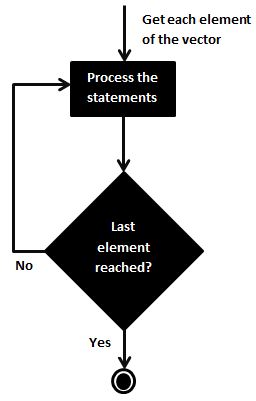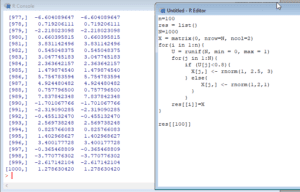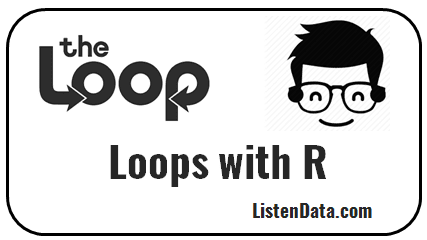

- #Writing a for loop in r how to
- #Writing a for loop in r code
- #Writing a for loop in r plus
- #Writing a for loop in r series
#Writing a for loop in r code
You immediately see this is rather tedious: you repeat the same code chunk over and over. You can do this as follows: print(paste("The year is", 2010)) Suppose you want to do several printouts of the following form: The year is where is equal to 2010, 2011, up to 2015. Let’s get back to the conceptual meaning of a loop. If you want to learn more on the concepts of vectorization in R, this is a good read.
#Writing a for loop in r how to
Nevertheless, as a beginner in R, it is good to have a basic understanding of loops and how to write them. For example, solutions that make use of loops are less efficient than vectorized solutions that make use of apply functions, such as lapply and sapply.

The while loop is a loop based on the respect of a condition. These elements exist in R with two versions: the for loop and the while loop. In programming, loops are the elements that allow you to repeat the same action several times. Simply put, this allows for much faster calculations. How to write a loop with R By David Loses Loops in R. Why? Well, that’s because R supports vectorization. When surfing on the web you’ll often read that one should avoid making use of loops in R. Sounds weird? No worries, it will become more clear once we start working with some examples below.īefore you dive into writing loops in R, there is one important thing you should know.

They allow you to automate parts of your code that are in need of repetition. It is aimed at beginners, and if you’re not yet familiar with the basic syntax of the R language we recommend you to first have a look at this introductory R tutorial.Ĭonceptually, a loop is a way to repeat a sequence of instructions under certain conditions.
#Writing a for loop in r plus
#Writing a for loop in r series
Every day, the hosts Adam and Jamie come to you with data about different myths that were tested. In the last video we saw that in R loops iterate over a series of values in a vector or other list like object. You are an intern on the show “ Mythbusters“. You can now combine all that you have learned to write functions! Let’s take one final example. Weve been writing R code in R Markdown files so far R scripts are just R code without the. (reminder: ‘vec’ is the vector ‘vec’ without the k-th element) We will learn to automate our analyses with a for loop. The first step to writing a loop is to understand the logic behind. – Compare the runtime with “difference()” for a vector containing 100,000 values (e.g. Hence, the code runs in a loop as long as the condition holds. – Create a function “difference2()” that computes the interval between successive events, such as in “interval = vec – vec”, but without using loops – Create a function “difference()” that computes the interval between successive events, such as in “interval = vec – vec” (Yes, I know, in this specific case, we could simply write “bigdata3 <- bigdata1 + bigdata2”, but that wouldn’t illustrate what I’m talking about now, would it?!) Exercise 5.3 The most versatile kind of loop is specified with the instruction “ for (A in B) One way of doing that in R is through loops. The goal of a function is often to make our life easier when repetitive and/or complex operations have to be done.


 0 kommentar(er)
0 kommentar(er)
